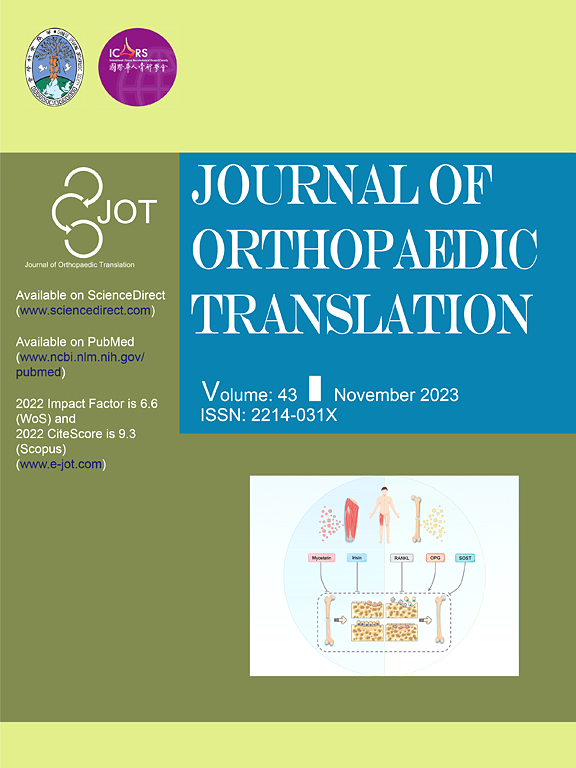3D bioprinting bone/cartilage organoids: construction, applications, and challenges
IF 5.9
1区 医学
Q1 ORTHOPEDICS
引用次数: 0
Abstract
Orthopaedic disorders, such as osteoporosis and osteoarthritis, impose substantial suffering upon an increasing population, driving demand for accurate disease models. Bone/cartilage organoids offer a promising solution by replicating complex 3D microstructures and multi-cellular niches, overcoming limitations of 2D models and animal experiments. 3D bioprinting, an additive manufacturing technology, enables the spatially precise deposition of cells and bioactive materials, facilitating efficient construction of organoids with enhanced structural fidelity. Therefore, this review specifically focuses on bone and cartilage organoids constructed using 3D bioprinting technologies. We summarize the prevailing 3D bioprinting techniques and biomaterials employed, critically analyze the unique advantages of bioprinting for creating these organoids, explore current technical challenges, such as standardization and scalability, and discuss future research directions. By addressing current progress and key issues in bioprinting bone/cartilage organoids, this review aims to accelerate their standardization and application as powerful platforms for multiscale disease modeling, drug screening, and regenerative medicine strategies. The translational potential of this article: Bone/cartilage organoids constructed via 3D bioprinting, through precise recapitulation of bone and cartilage tissue microenvironment and physiology, enable multiscale disease modeling from localized pathologies to systemic responses, despite persisting unresolved challenges in reproducibility and stability. This review highlights their clinical translational value and elucidates the driven role of 3D bioprinting in accelerating their clinical adoption, particularly in regenerative medicine.

3D生物打印骨/软骨类器官:构建,应用和挑战
骨质疏松症和骨关节炎等骨科疾病给日益增长的人口带来了巨大的痛苦,推动了对准确疾病模型的需求。骨/软骨类器官通过复制复杂的3D微结构和多细胞壁龛,克服了2D模型和动物实验的局限性,提供了一个有前途的解决方案。3D生物打印是一种增材制造技术,能够在空间上精确沉积细胞和生物活性材料,促进类器官的高效构建,提高结构保真度。因此,本综述特别关注使用3D生物打印技术构建的骨和软骨类器官。我们总结了目前流行的生物3D打印技术和使用的生物材料,批判性地分析了生物打印在创造这些类器官方面的独特优势,探讨了当前的技术挑战,如标准化和可扩展性,并讨论了未来的研究方向。通过介绍生物打印骨/软骨类器官的最新进展和关键问题,本文旨在加速其标准化和应用,作为多尺度疾病建模、药物筛选和再生医学策略的强大平台。本文的翻译潜力:通过3D生物打印构建骨/软骨类器官,通过精确再现骨和软骨组织微环境和生理,实现从局部病理到系统反应的多尺度疾病建模,尽管在可重复性和稳定性方面存在持续未解决的挑战。这篇综述强调了它们的临床转化价值,并阐明了3D生物打印在加速其临床应用方面的驱动作用,特别是在再生医学方面。
本文章由计算机程序翻译,如有差异,请以英文原文为准。
求助全文
约1分钟内获得全文
求助全文
来源期刊

Journal of Orthopaedic Translation
Medicine-Orthopedics and Sports Medicine
CiteScore
11.80
自引率
13.60%
发文量
91
审稿时长
29 days
期刊介绍:
The Journal of Orthopaedic Translation (JOT) is the official peer-reviewed, open access journal of the Chinese Speaking Orthopaedic Society (CSOS) and the International Chinese Musculoskeletal Research Society (ICMRS). It is published quarterly, in January, April, July and October, by Elsevier.
 求助内容:
求助内容: 应助结果提醒方式:
应助结果提醒方式:


